Nut Family
Threaded Nuts
Nuts made from various metals and plastic have a primary function in a threaded assembly to act as the device through which the tension is induced into the bolt or screw and to continue to retain that tension and the clamp load in the assembly. The majority of nuts have hexagon drive faces but they come with a large variety of other features for a secondary purpose such as thread locking, Sealing, load spreading, pinning, welding and capping.
Link
Hexagon Full Nut Hexagon Lock Nut/ Jam Nut Castle/ Turret Nut Self Locking Nut Coupling Nut Pressed Nut
Cage Nut Dome/Cap/Acorn Nut Flange Nut Weld Nut Square Nut J/Chimney Nut Bearing/Hook Nut
Pal/Counter Nut Shear nut Keps nut Combi nut Wing nut T slot nut Tee nut Barrel nut Thumb-nut
.
Nuts are available in the full range of threads Metric coarse and fine, American Unc and Unf and British BSW, BSF and BA. Materials include carbon steels, high-grade steels, stainless steels, brass, bronze, aluminium and nylon.
.
.
.
Hexagon Full Nuts
Plain hexagon full nuts are the most commonly used mating part to go with a bolt or a screw. Din 934 is the dominant standard that is similar to a hexagon nut ISO style one. Hexagon high nuts ISO style two are again similar to Din 934 but sizes M10 and above are slightly larger for applications requiring a higher clamp load.
Standard hexagon full nuts are available in diameters from M1.6 to M64 and in product classes 6, 8, 10 and 12; the higher grades are more readily available in the larger diameters. Full nuts with wider dimensional tolerance are available in lower strength classes.
Hexagon full nuts are cold forged up to M24 and either hot forged or machined above this diameter. Standard full nuts must be marked with the strength grades and manufacturer’s identification Mark for sizes above M5 diameter.
Lock Nuts or Jam N
Nuts
Lock nuts are not to be confused with Locking Nuts (self-locking nuts); in the USA lock nuts are referred to as Jam nuts, globally they are also referred to as half nuts or thin nuts. Product
Locknuts are used in combination with hexagon full nuts, the correct assembly method is to apply the thin nut first then lock the full nut against the lock nut. The two nuts are tightened against each other after assembly to ‘jam’ them together preventing the standard or second nut from loosening and to create thread locking.
Jam nuts are available in various materials and finishes, including carbon steel, stainless steel and brass. In steel, they are manufactured in sizes from M1.6 to M64.
Square nuts Product

Self Locking Nuts
Self-locking nuts have a thread locking system that resists the screw reverse turning or backing off; most systems possess a thread interference characteristic that resists loosening under vibration.
They are referred to as ‘prevailing torque nuts’ or 'stiff nuts'. Product
.
All Metal Locking Nuts
All metal Locking Nuts have deformed threads that create thread interference that prevents the nut from loosening and are designed for use with class 8 bolts or above.
The all-metal locking nut Brands are:
Aerotight® Anco® Binx® Cleveloc® Centre-loc® Flexloc® Philidas® Snep® Staytite® Stover® Toplock® Vargal®
.
Nylon Insert Nuts
Nylon insert self-locking Nuts interference characteristic is provided by a nylon 66 ring inserted onto the head of the Nut, the mating product is normally a class 4.8 machine screw.but can be a higher class of bolt or screw. Nylon insert nuts are typically ungraded but can be obtained in class 8, 10 and 12.
Most metric nuts are produced to the DIN standard and Inch to American standards Detail
Insert colours are random and do not denote class or thread type.
The market has product available to British Inch standards
.
.
.
Coupling Connector Nuts
Coupling nuts are also known as extension nuts, are for joining two male threads, most commonly Allthread full threaded rods, also partially threaded Rebar. The outside of the nut is usually a hexagon to enable a hexagon wrench to rotate it. Coupling nuts with left-handed threads are used to make up long rod assemblies from shorter lengths of rods. Coupling nuts threaded with two different thread sizes and profiles are called reducing coupling nuts. Product
Coupling nuts can be used to tighten a rod assembly inward or to press a rod assembly outward
Castle, Turret and Slotted Nuts
The Castle or Turret has a castle tower on the top of the nut to allow the nut to be pin locked into position after installation; this is done generally with a split cotter pin or with a taper pin or wire. The pin is inserted through the parapet slot in the castellation, and then through a hole passing through the mating fastener and prevents the nut from becoming loose in service. Product
The castle is superimposed onto the normal height of a standard nut so that the nut has full loading capability. Slotted nuts are standard nuts with the parapet slots cut or forged in and accordingly are weaker.
Pressed Nuts
Hexagon and square pressed nuts are stamped out from sheet metal and are purposely designed for applications where space is limited and the thinness or low profile of the nut is demanded. They are also used in cage nut assemblies and in industries that require a budget-priced nut. Product
They are not suitable for load-bearing joints because they have low tensile strength, requiring the nuts can only be used in lightweight applications or low tensile conditions.
Cage Nuts 
The cage nut is a low strength square metal nut retained in a thin sheet metal cage that can be slotted into a punched hole. This allows the cage to be located on the underside of a part. Screws are then assembled onto the nut from the top side, without the need to hold the nut. Product
The nut fits loosely in the cage allowing for some movement to assist the assembly and adjustment of the screw. Generally, Cage nuts are made of steel with a zinc finish on both the nut and the cage and are also available in stainless steel.
Dome Nuts and Cap Nuts
Hexagon dome nuts also called Acorn nuts because the head shape is similar to an acorn. They also go under the name Crown nut, Blind nut and Dome cap nut. The nut is formed in one piece with a cap at one end and is normally available in steel, stainless steel, Nylon and brass. Product
The advantages of the domed nut are that they ensure the prevention of contaminants onto the threads, protect other things from the screw threads and improve the visually finish of the completed assembly. They are also available with a high or low crown, low crown is sometimes referred to as Cap nuts.
Flange Nuts Locking Flange nuts
Flange nuts have a flange at the bearing face that eliminates the need for a washer and spreads the surface loading. The underside of the flange is normally plain but can have radial serrations that produce a locking action on the bearing surface. Product
Flange nuts are available in Steel, Stainless steel and brass. Unbrako produce a class 12 flange nut with serrations called a Durlok ® nut
Weld Nuts 
Weld nuts have several 'nib’ or ‘pip' protrusions to provide contact points for electrical spot welding these are called weld projections and are designed to melt and weld to a panel when welding equipment applies high electrical current. Product
Some have a central spigot to aid location and prevent weld spatter entering and blocking threads. Weld nuts are available in hexagon, square, round, flange nut, and are all produced in weldable steels.
.
Wheel Nuts
Wheel nuts or Lugnuts as they are called in the USA are formed with a cone or taper end and are designed to mate with the tapered recess in an automotive wheel this gives a positive location and increased the bearing surface for locking. Product
Tee Nuts
Tee nuts are a pressed metal threaded product with three or four spiked prongs.
Tee nuts are designed to embed in timber to provide a parallel thread to connect or to add parts. The largest users are in the furniture industry but the Tee nut also has a wood construction use. Product
J Nut Chimney Nut
Chimney or J-nuts are used to clip a thread to sheet plate and are used to clip steel threads to a number of different materials. Product
The spring action of the clip holds the thread on the plate
Bearing Hook Nuts
Bearing nuts or hook nuts as they are often called are used to locate bearings and other components onto a shaft or adapter sleeve. They are also used for mounting bearings on tapered shaft seats and dismounting bearings from withdrawal sleeves.
Bearing nuts have to be secured to prevent unintentional loosening. Product
This is done, either by a locking device that engages a keyway in the shaft or by a locking mechanism integrated into the nut. A hook spanner is used to install and remove the nut.
Pal Counter nuts
Pal counter nuts are a resilient spring locking action nut and enables a lightweight vibration-proof locking action in a low-profile size. Designed to be used with or without a standard nut, they are ideal for applications where frequent load changes would tend to loosen conventional nuts. Product
These lock nuts have the major advantage of not requiring a torque wrench, simply turn the nut to finger tight and then tighten a further ½ turn. After proper tightening, the hexagon faces become slightly concave allowing visual examination and a reliable inspection method. Pal counter nuts meet the specification of DIN7967.
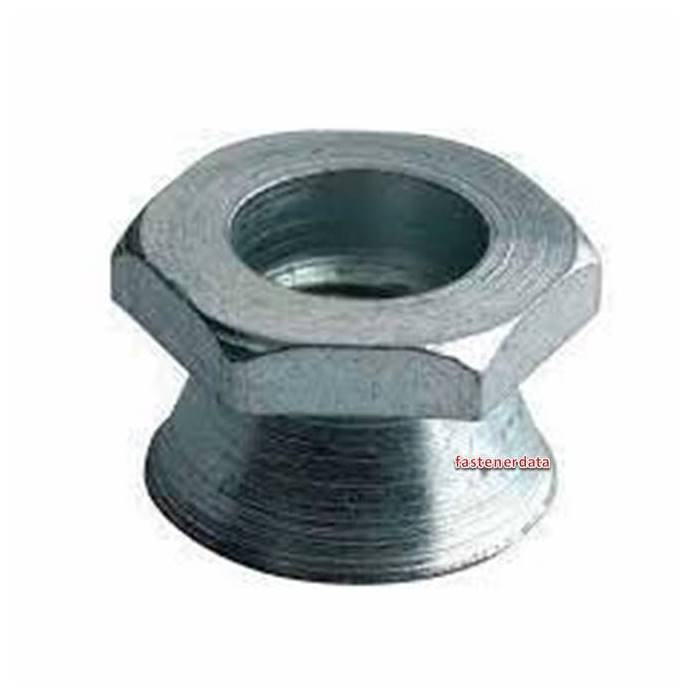 Shear Nut
Shear Nut
Shear nuts are a security nut that is difficult to remove without specialist tools. The hexagon section of the nut twists off when tightened to a predetermined torque; only the cone part is threaded leaving a tamper-resistant cone nut. The cone nut because of its shape is very difficult to grip, making removal difficult.
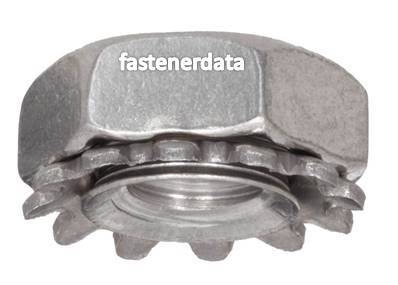 Keps nut
Keps nut
Sometimes call a K-lock nut, keps nuts have an integral free to rotate external shakeproof toothed washer captured on the nut.
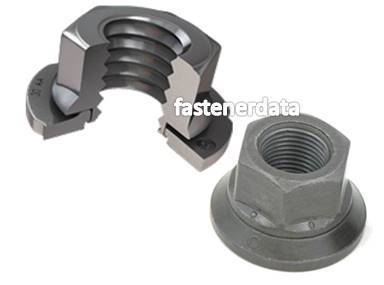 Combi Nut
Combi Nut
The combi nut is similar to the Keps in that an integral free spinning flat washer is captive to the nut making assembly much easier and faster.
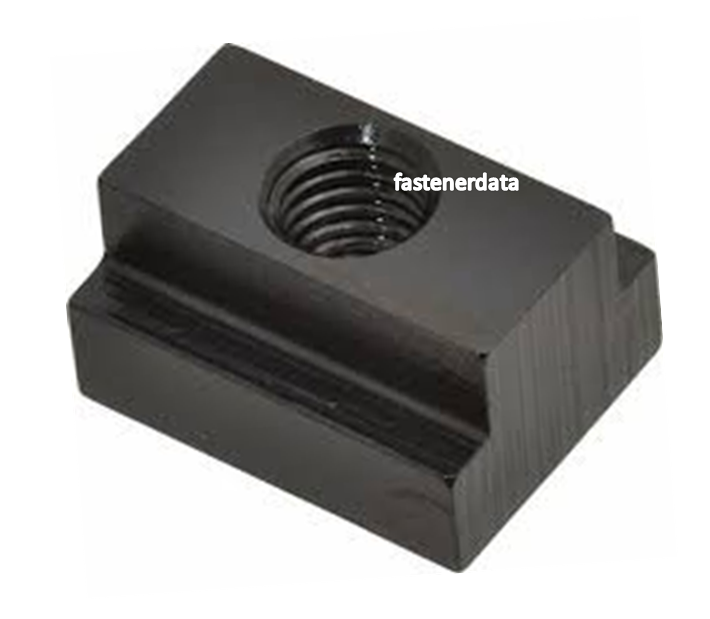
T slot Nuts
T-slot nuts are used with a threaded clamp to secure, position and track slide large assembly pieces in assembly factories. T-slot nuts slide along a mating T-slot track, to move a variety of industrial structures and assembly machines.
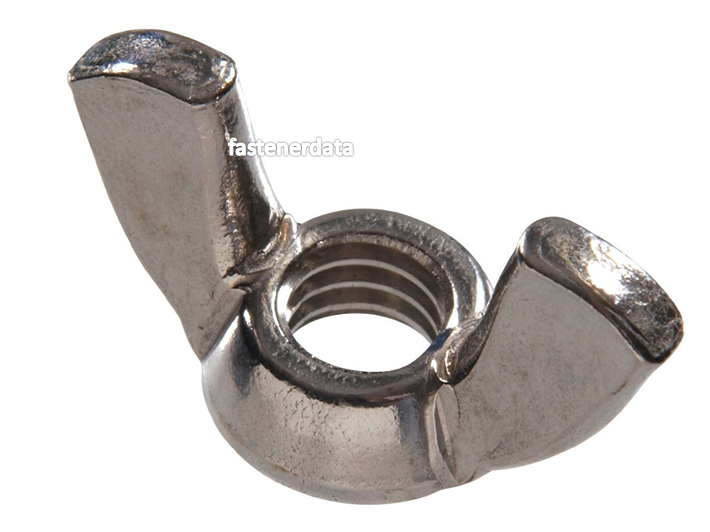
.
.
Wingnut wing nut
Wingnut or wing nut is a nut with two metal wings, one on each side, so it can be easily tightened and loosened by hand. Available as cold formed wing nuts with various wing styles. Hot forged wingnuts are available in a smaller number of styles.
Die-cast wingnuts are available to order along with manufacturing volumes.
Stamped metal wing nuts are the cheap option.
.
.
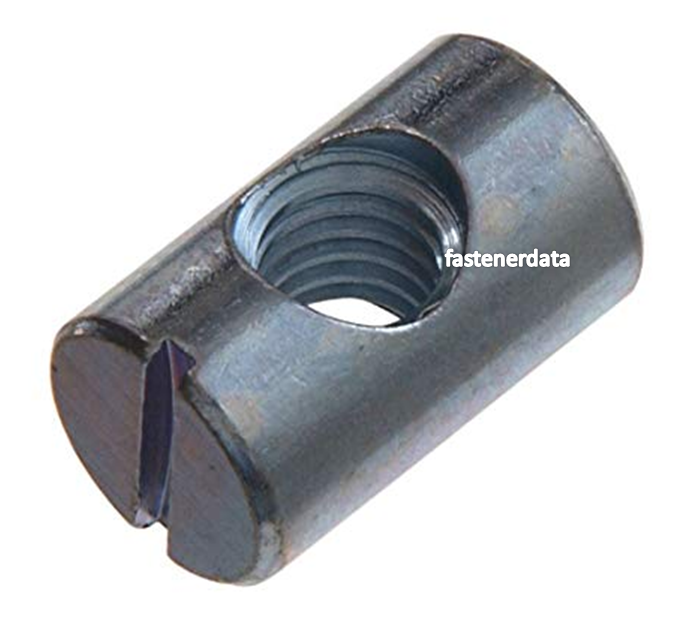 .
.
Barrel nut, cross dowel, dowel nut
Barrel nuts sometimes described as a cross dowel nuts or dowel nuts are used in ready to assemble flat pack furniture applications and in aerospace.
Furniture Barrel nuts
Furniture, cross dowel barrel nuts are round shaped metal nuts used with furniture connector bolts to join two pieces of composite or wood. The threaded hole passes through the round sides of the dowel. Cross dowels have either a slotted, pozi or internal hexagon drive; the screwdriver can be inserted to rotate and align the dowel.
Aerospace Barrel nuts
Barrel bolts are used to bolt thin sheet metal parts to more substantial pieces. The round barrel nut is a metal dowel threads vertical to the length of the nut. The barrel nut sits in a hole inside the larger piece; a hexagon bolt is threaded into the barrel nut from outside the sheet metal. They are preferred to conventional nuts and bolts because they do not require a flange to be machined onto the receiving part enabling aircraft weight to be reduced.
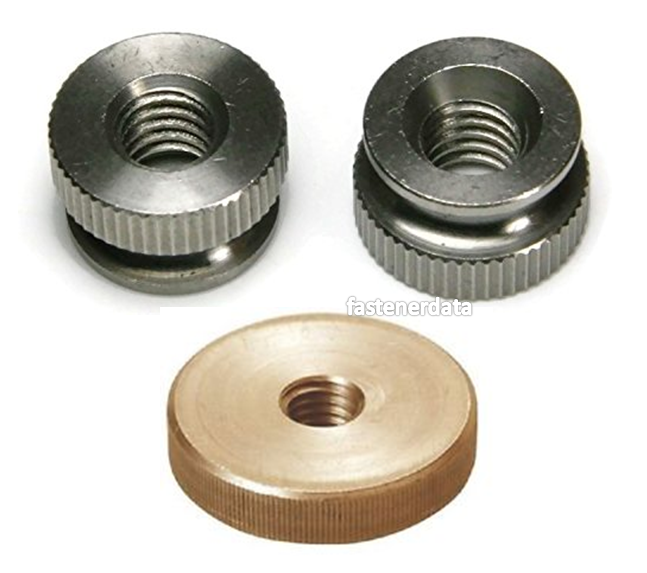
..
.
Thumb nut Knurled Nut
Knurled nuts are metal or plastic nuts with a knurled pattern outside surface. Assembly and tightening by hand using the thumb and first finger. Hand tight nuts are easy to adjust and allow operator control.
Prevail torque Nuts
see both all metal locking nuts and Nylon insert locking nuts, both work by prevailing torque















